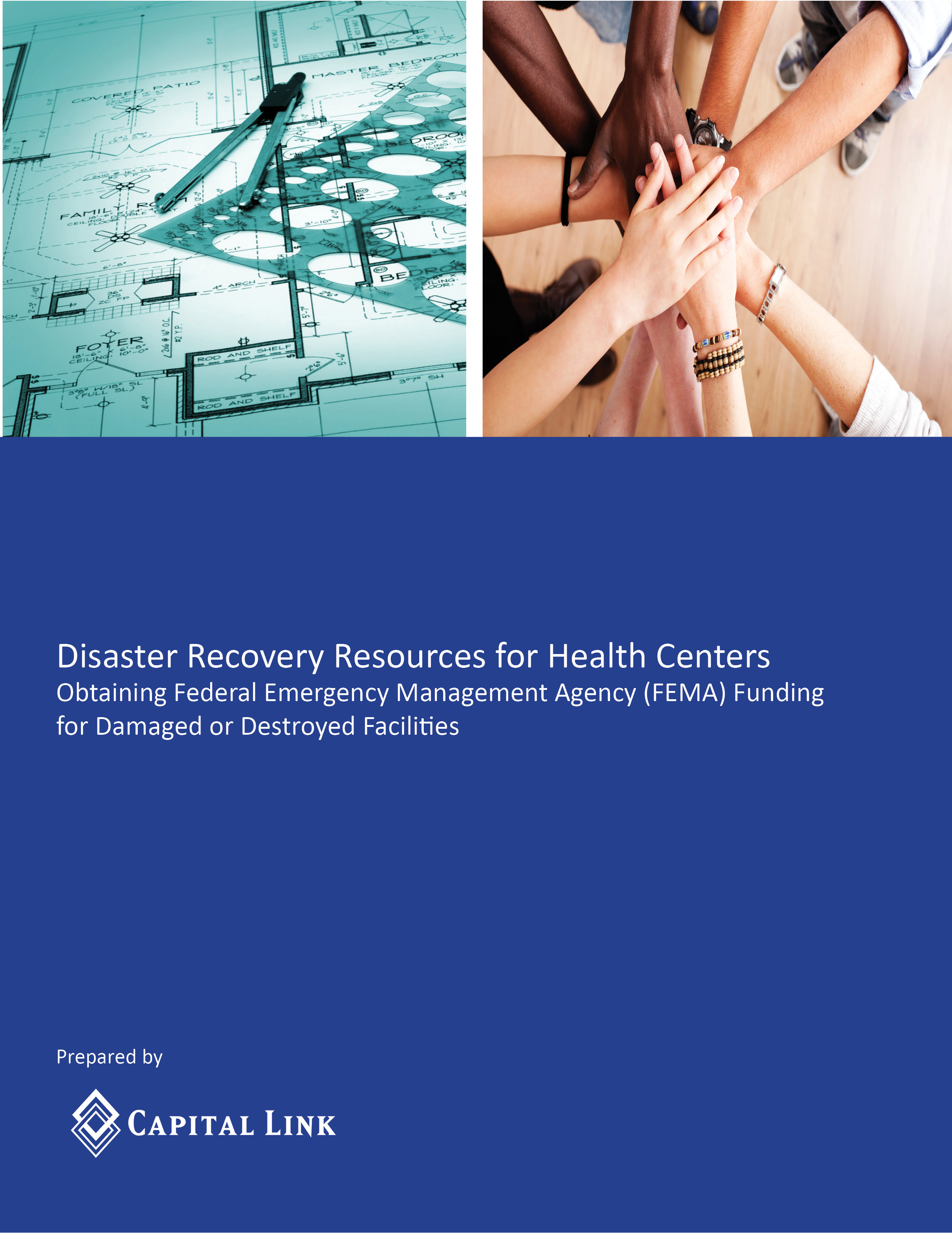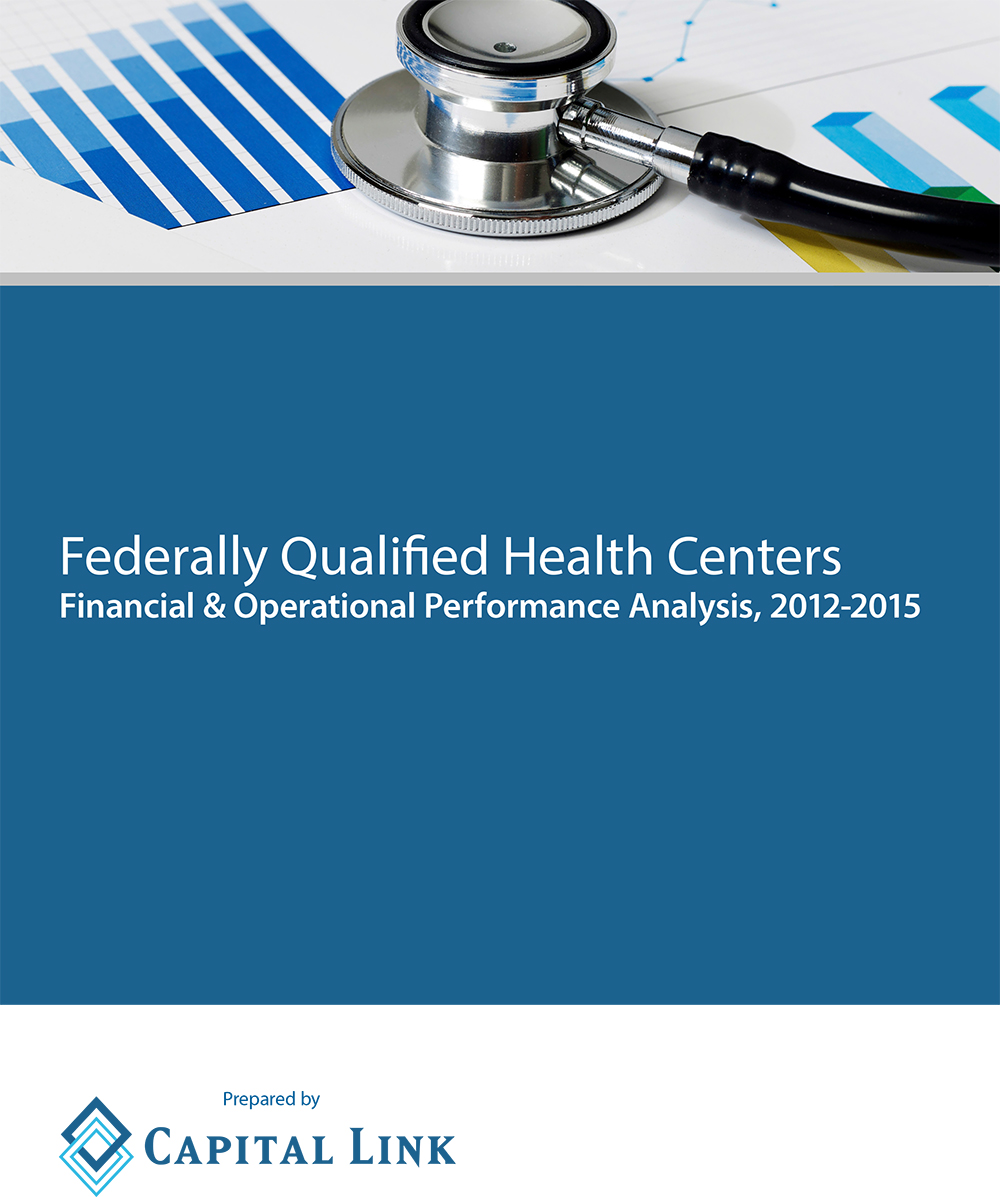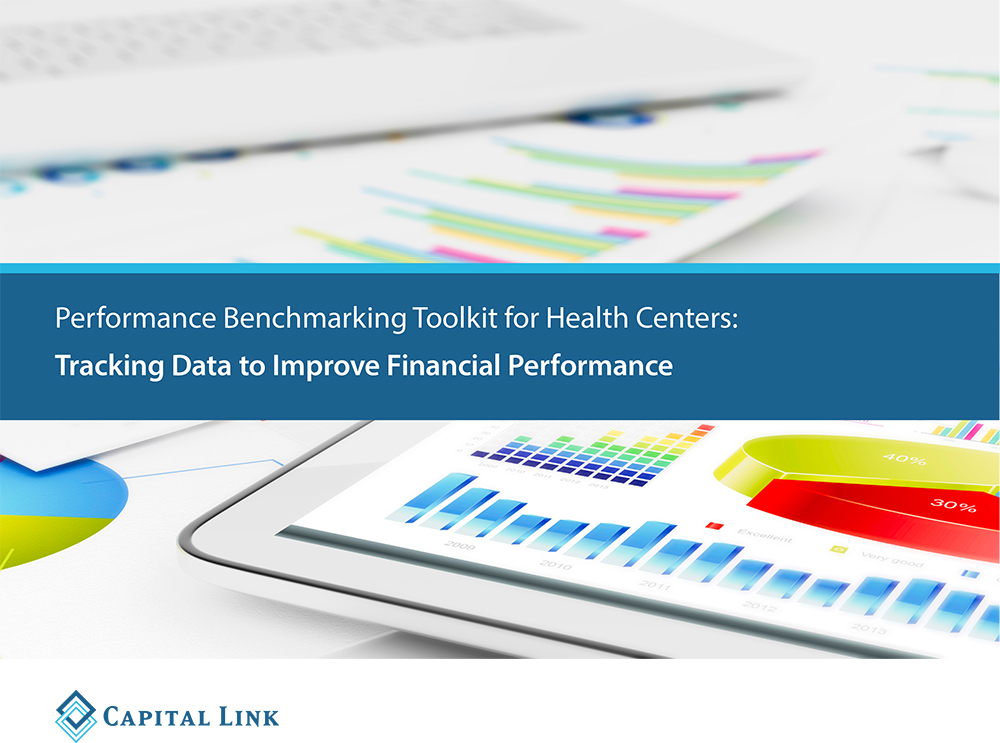
A Quarterly Resource Bulletin from Capital Link Fall 2017
Message from the CEO
As we await news on Congress’s progress toward fixing the Health Center Funding Cliff, we are truly inspired by the resilience of the health center community. While a solution is still unclear, your persistence and dedication to health centers and the patients they serve continues to produce strong bi-partisan support.
Our thoughts are with all of those affected by the recent hurricanes and wildfires, including many of our health center partners. With support from HRSA, Capital Link has prepared several resources to assist health centers in obtaining FEMA funding, which are highlighted under Resources in this issue.
After major events like those experienced over the last few months, we often reflect on how we can best prepare ourselves for the future. In the article Scenario Planning: Being Proactive in a Changing Environment we provide some steps health centers can take now to be equipped to act, within an environment of uncertainty.
Also included in this issue – a federal news update, health center highlights, and a list of our upcoming trainings and webinars.
Warm Regards,
Allison Coleman, CEO
Federal Update
Below is a selection of recent health policy and regulatory news and information relevant to health centers and PCAs. For regular updates, subscribe to Capital Link’s blog, or access NACHC’s blogs and the HRSA’s health center webpage.
Health Center Funding Cliff Updates
October 1st was the deadline to continue mandatory funding for health centers and other critical programs such as the Children’s Health Insurance Program (CHIP), but the funding cliff has not been addressed by Congress as of yet. To learn more, updates on the latest developments are continuously being posted on NACHC’s blog.
New Tax Reform Framework Omits NMTC
September 27, 2017 – The Republican Tax Framework does not include the federal New Markets Tax Credit (NMTC) program, an invaluable tool for revitalization and job creation in low-income communities that has helped many health centers cost-effectively finance their capital projects. Read more on the NMTC Coalition’s blog.
Capital Fund Receives $1.1 Million Award from the CDFI Fund
September 19, 2017 – U.S. Department of the Treasury’s Community Development Financial Institutions (CDFI) Fund announced the awardees of the FY2017 CDFI Program round. Capital Link’s lending affiliate Community Health Center Capital Fund is among the 265 CDFIs receiving a Financial Assistance (FA) award. The nearly $1.1 million award, one of the largest granted in this round, will enable Capital Fund to increase its lending for community health centers seeking to finance facilities and operational growth. If your health center needs additional funding for an upcoming expansion or renovation project, Capital Fund may be able to help. Learn more by emailing Brandon Boyle, Director of Loan Programs, at This email address is being protected from spambots. You need JavaScript enabled to view it..
HRSA Awards $200 Million to Health Centers for National Opioid Crisis Efforts
September 15, 2017 – Health Resources and Services Administration (HRSA) awarded over $200 million to 1,178 health centers and 13 rural health organizations across the US to increase access to substance abuse and mental health services to boost efforts against the opioid epidemic. Read more here.
Hurricane Guidance for Healthcare Facilities
September 13, 2017 – The U.S. Department of Health & Human Services (HHS) has drafted guidance to help healthcare facilities with disaster planning and recovery for major hurricanes. Read more here. Capital Link, with support from HRSA, has developed resources specifically for health centers, highlighted in this issue here. Please note that the deadline for organizations seeking reimbursement for Hurricane Harvey expenses to submit a Request for Public Assistance (RPA) to the Texas Division of Emergency Management (TDEM) is 5 p.m. EDT on Tuesday, October 31st. Learn more here.
HHS Announces FY17 Quality Improvement Awards
August 15, 2017 – HHS awarded nearly $105 million to 1,333 health centers in all U.S. states, territories and the District of Columbia as an investment in quality improvement, building upon their 2016 achievements. These awards support continued improvement at health centers based on high levels of performance in one or more of five categories: Improving quality of care, increasing access to care, enhancing delivery of high value health care, addressing health disparities, and achieving Patient-Centered Medical Home recognition. Read more here.
New and Noteworthy
Scenario Planning: Being Proactive in a Changing Environment
In light of the challenging events of the past few months, many health centers are wondering what they can do to become better prepared for the future. Whether it is a natural disaster or a policy change, preparing as much as possible for an adverse event is critical to being able to respond quickly and remain resilient. Scenario planning is a strategic planning method that can help you establish assumptions about the future to inform decision-making and long-term strategic business plans.
Estimating the impacts of potential future events, provides you with an opportunity to proactively plan for change, reducing reactionary responses and conserving resources in the long run. The key to scenario planning is understanding that your assumptions do not have to be precise to give you a better idea of the consequences to certain events, and often it’s helpful to limit variables so you don’t end up with “paralysis by analysis”.
Scenario Planning Activities and Tools
The following scenario planning examples can help you establish productive action steps in times of uncertainty.
“Back of the Envelope” Estimates: This simple method helps you establish assumptions to inform decision-making by creating baseline calculations with data you have on hand. For example, if your health center has the goal of increasing market share of the low-income population in your service area by 5%, you can quickly calculate a rough estimate of how much this might cost based on your historic UDS data. The resulting estimate may not be 100% accurate, but it provides enough information to begin to answer pressing questions such as does your health center have enough space to serve additional patients, do you need to recruit more providers, etc.
Financial Forecasting/Modeling: Financial forecasting and financial modeling use current and historical financial performance metrics in order to provide health centers with a reasonable projection of the effects of an event or policy change on the bottom line. Capital Link frequently provides financial forecasts to health centers planning capital projects, and financial modeling services to measure and evaluate the impact of alternative payment structures. These activities help health centers plan for potential impacts on operations and determine a comfortable level of risk.
Predictive Analytics: Predictive analytics takes scenario planning to the next level by using advancing technology and algorithms to model actions and consequences. Predictive analytics considers the vast number of possibilities and provides a real-time estimate of the probability of their occurrence, allowing for better planning and management.
Economic Impact Analyses: Economic impact analyses, including Capital Link’s Value + Impact report, use IMPLAN, an integrated economic modeling software, to estimate the impact of projects and expenditures on the local economy. By extrapolating current and historic data to calculate assumptions about the near future, these reports illustrate the value health centers have on the communities they serve. Capital Link has also used IMPLAN to illustrate the value and impact of a health center both before and after a potential rollback to pre-ACA levels of Medicaid eligibility and insurance subsidies, and cuts to federal operating support.
UDS Mapper Analysis: UDS Mapper is an example of a publicly available resource that allows health centers the ability to calculate various scenarios based on changing variables. The Explore Service Area tool on the website, allows health centers to plug in assumptions of total patients served, total new patients to be served, and new low income patients to be served and receive estimates of unserved populations target and other helpful data. The UDS also provides detailed market data on federally funded health centers down to the zip-code level, which is useful for exploring expansion and contraction scenarios.
NACHC’s Medicaid Impact Statement: Also readily available online, this interactive tool provides an organization-level and state-level summary of Medicaid's significance to health centers and patients.
Estimating Impact of Funding Cuts: Most health centers are considering the impact of a potential 70% cut to HRSA Section 330 grant funds, absent Congressional action to fix the health center funding cliff. You can model the impact of this potential cut, and any others that may arise in your local environment, using NACHC’s Funding Cliff Impact Estimator and Capital Link’s more detailed financial modeling based on your health center’s historical data.
While scenario planning cannot predict the future, it can help you understand the severity of potential negative impacts and the “upside” of positive impacts, narrow down your options, establish ranges in which to test thresholds, and provide a level of confidence in your ability to handle a given situation.
Resources
Disaster Relief Resources for Health Centers
With support from HRSA, Capital Link has prepared several resources to assist health centers affected by the recent hurricanes and wildfires in obtaining Federal Emergency Management Agency (FEMA) funding for damaged or destroyed facilities. Resources include a general disaster recovery resource, which every health center should add to its emergency preparedness plan, as well as one-page customized resources for each of the recent disaster declarations. We will continue to update these resources here on our website as new information becomes available.
Performance Evaluation Profile – New Enhanced Version
Capital Link is now offering an enhanced version of our Performance Evaluation Profile (PEP). This diagnostic tool now features a peer comparison dashboard, in addition to dashboard summaries of the top 15 metrics examining financial health, productivity, utilization, and staffing. Using Capital Link's own database of health center audits and UDS information, the PEP provides health centers with multi-year performance trends, benchmarking the results against state, national, and peer medians across 73 financial and operational metrics. The analysis also indicates whether the results meet Capital Link’s industry recommendations. Learn more and view a sample report here.
Federally Qualified Health Centers Financial & Operational Performance Analysis 2012-2015
This report provides an aggregate financial and operational profile of community health centers. By presenting multi-year results from health centers nationally, this report offers a framework for identifying the financial strengths, challenges, and benchmarks that support opportunities for performance improvement. Review the report here. Also, we recently conducted a webinar on this topic. You can access recording here.
Performance Benchmarking Toolkit for Health Centers: Tracking Data to Improve Financial Performance – Updated
This updated toolkit provides guidance in applying data analysis tools to help health centers more effectively track performance, understand key drivers, and incorporate operational insights for financial sustainability. Access the toolkit here.
NACHC Community Health Center Chartbook
NACHC recently released the Community Health Center Chartbook, a collection of health center data that illustrates — through charts, graphs, infographics, and maps — how health centers expand access, provide high-quality and cost-effective care, and reduce health disparities. Access the Chartbook here.
Health Center Highlights
Capital Link regularly profiles health centers that have successfully completed their expansion plans. These health center stories are available on our website. Capital Link regularly profiles health centers that have successfully completed their expansion plans. The next additions to our series of health center project success stories will be ChapCare, CA and an impact analysis on Family Health Centers of San Diego, CA.
We want to congratulate Blackstone Valley Community Health Center, for recently closing financing on a $14.1 million new health center in Central Falls, RI. Upon completion in February 2018, BVCHC’s new 47,000 square-foot Central Falls Neighborhood Health Station will be a unique collaboration of population-based primary care and public health aiming to serve 90 percent of residents and provide 90 percent of the health citywide. Capital Link lending affiliate Community Health Center Capital Fund, in collaboration with Local Initiatives Support Corporation (LISC), Morgan Stanley, and The Kresge Foundation, provided funding for the project through Healthy Futures Fund 2.0. Read more about the project on Capital Fund’s blog.
We also want to congratulate Community Health Systems, Inc. (CHS) for recently closing financing on a $5.6 million renovation and expansion of a new facility in Bloomington, CA. Upon completion in the summer of 2018, CHS’s new the health center will be able to serve an estimated 11,000 additional patients through 36,000 visits annually, a significant increase to its current capacity of approximately 5,600 patients through 18,500 visits annually. The project was funded using multiple sources, including a $2,000,000 leveraged loan from Capital Fund. Read more here.
Upcoming Events
Presentations
Capital Link regularly attends industry conferences to exhibit, conduct trainings, and present information related to capital development to health centers and primary care associations. Below are a few of our next scheduled events. Learn more here.
NACHC Financial, Operations Management/IT Conference (FOM/IT)
October 25–27, 2017
Las Vegas, NV
Keeping It Simple: Using Data to Demonstrate the Value of Health Centers on One Page
Thursday, October 26, 2-3:30 PM
Presenters: Allison Coleman, MBA, CEO, Capital Link; Diana Erani, HCCN Director, MLCHC
NACHC Cultivating Health Center Operations (CHCO)
November 9-10, 2017
Denver, CO
Presenters: Cindy Barr, RN, Operations and Facilities Planner, Capital Link; Melissa Schoen, MBA, MPH, CEO, Schoen Consulting; Melissa Stratman, CEO, Coleman Associates
NACHC 2017 PCA & HCCN Conference
November 13-15, 2017
Austin, TX
Training and Technical Assistance Opportunities with BPHC’s National Cooperative Agreements – Pre-Conference Session
Monday, November 13, 9-11 AM
Presenters: Allison Coleman, MBA, CEO, Capital Link; Mark Lurtz, Director of Partnership Development, Capital Link; others to be announced
Gulf Regional Health Outreach Program Primary Care Capacity Project
December 12, 2017
Financial Considerations for Value-Based Payment Workshop
Wednesday, December 13, 9:45-11:45 AM
Presented by Jonathan Chapman, Director of CHC Advisory Services, Capital Link
Webinars
Capital Link’s next series of webinars will be scheduled soon and posted here on our website. Access recordings of our past webinars here.





